(UPDATED at 4:40 p.m. CDT, April 22, 2016)
The use of an unmanned aerial system, or drone, to ignite a portion of the prescribed fire at Homestead National Monument west of Beatrice, Nebraska appeared to be successful, according to the participants we talked with at the completion of the project. After the perimeter was ignited by hand using drip torches, the drone launched to the interior and dropped plastic spheres which burst into flame about a minute after landing on the ground. The spheres are similar to the ones dropped by helicopters for aerial ignition on large wildfires and prescribed fires. This project was 26 acres of grass that had received heavy rain which ended about 30 hours earlier. The ground was wet but the thatch was mostly dry and greenup had started. The temperature was in the high 60s and the relative humidity was around 40 percent. The wind was light, a few miles an hour.
The drone only holds 13 spheres, compared to the hundreds or more that fit into the hopper of a full size machine carried by a piloted helicopter. The drone made around half a dozen or so sorties, returning to the launch spot each time to reload. It followed a predetermined pattern each time, flying to its assignment, dropping the spheres in a line, then returning.
After the first sortie it returned with its full load of spheres. A radio communication problem prevented the deployment of the devices. After this was worked out it went fairly smoothly. At several points, however, the hand igniters had to wait for the drone to launch and light its assigned locations before the firefighters could continue working their way around the perimeter.
Most likely these bugs can be worked out.
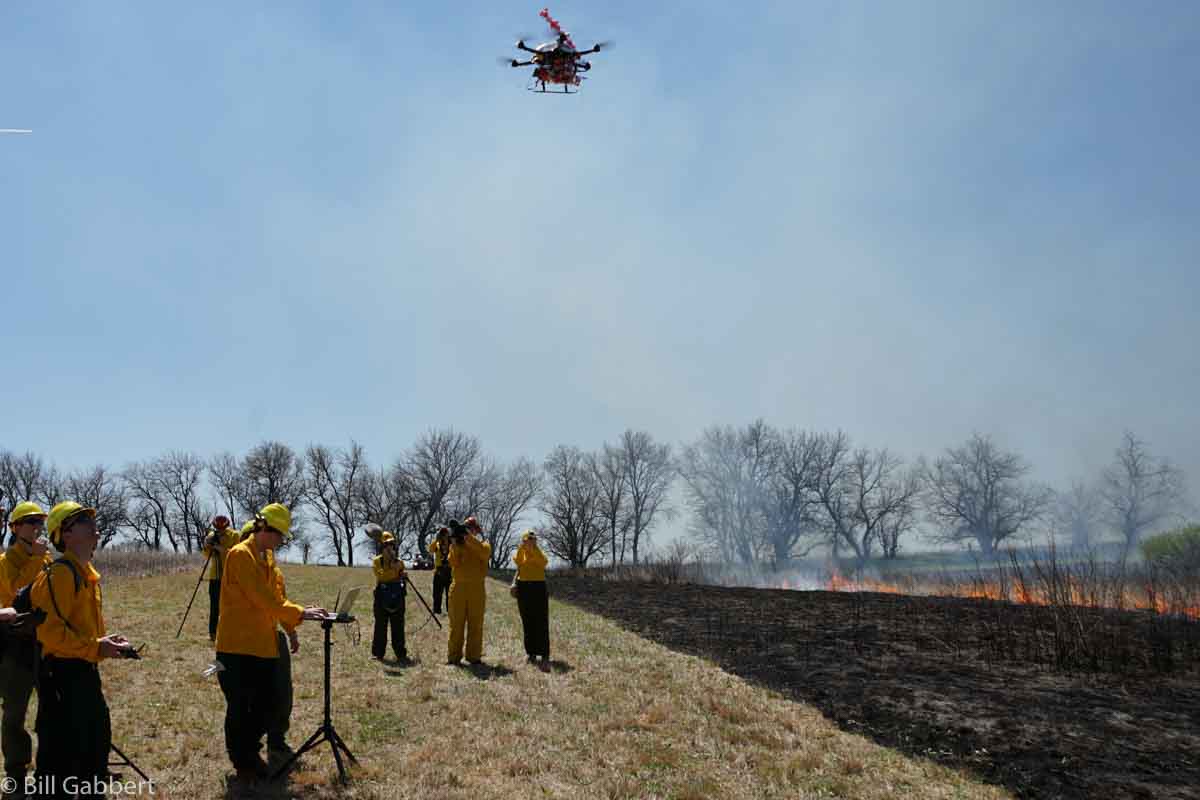
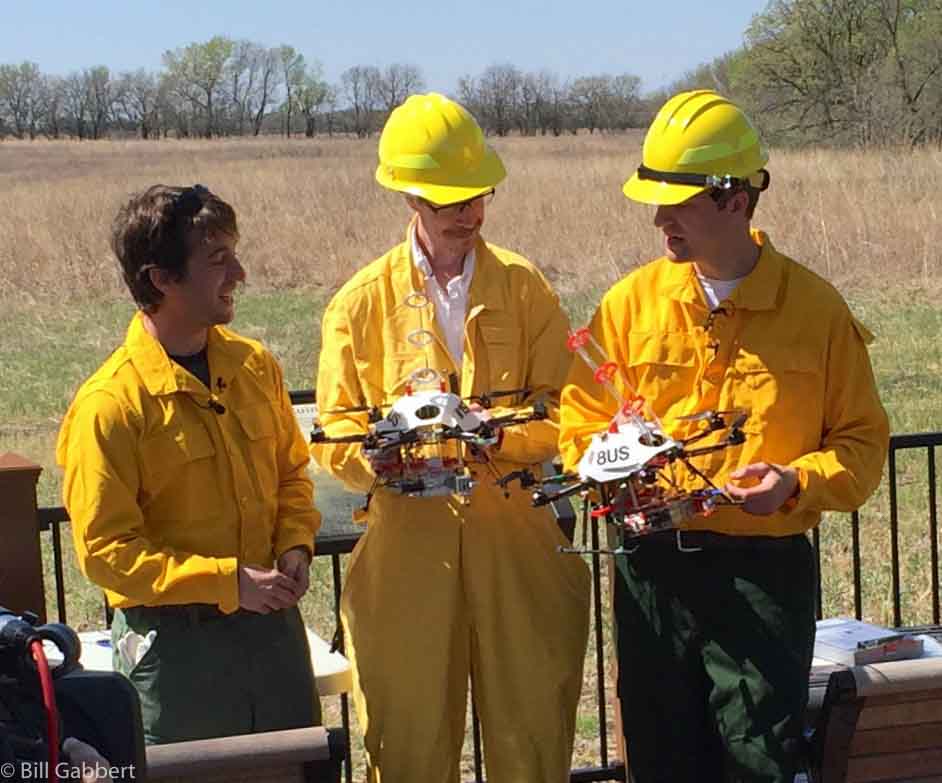
Below is a video report about the project. It includes images from the burn plus interviews with five key members of the team that helped make it happen.
Scroll down to see more photos:
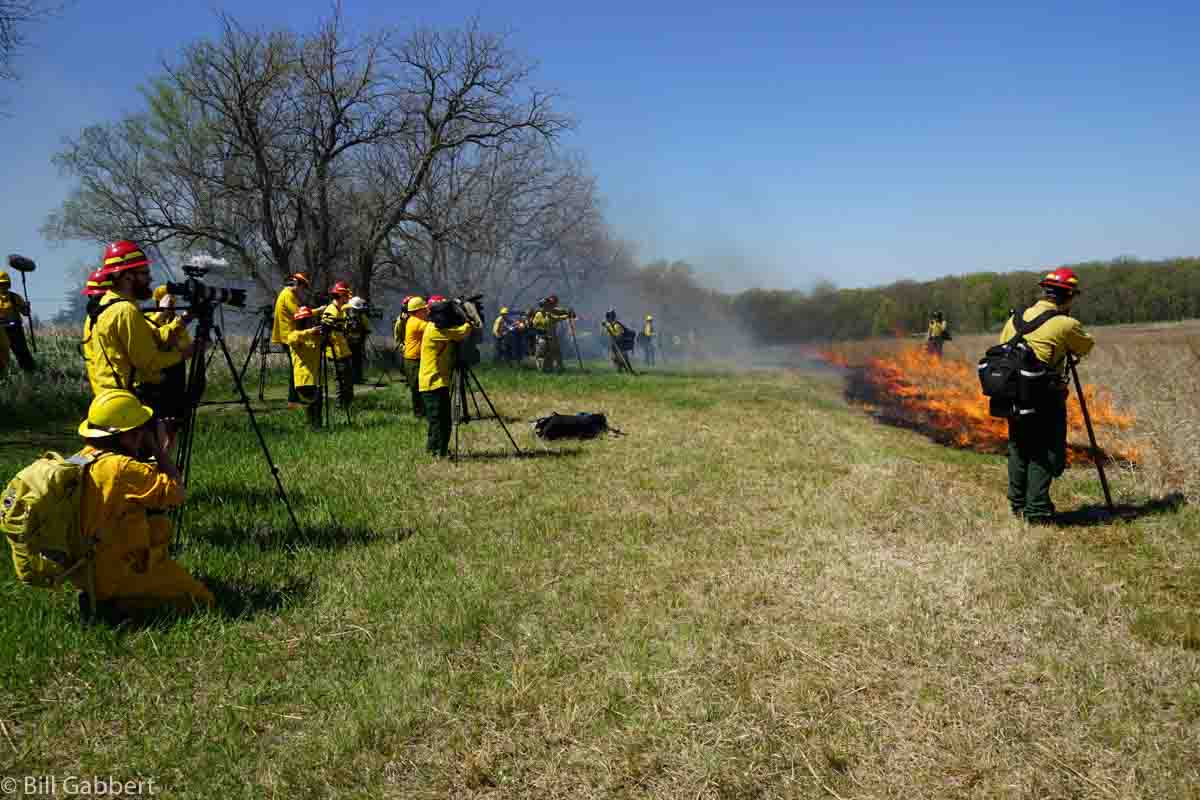
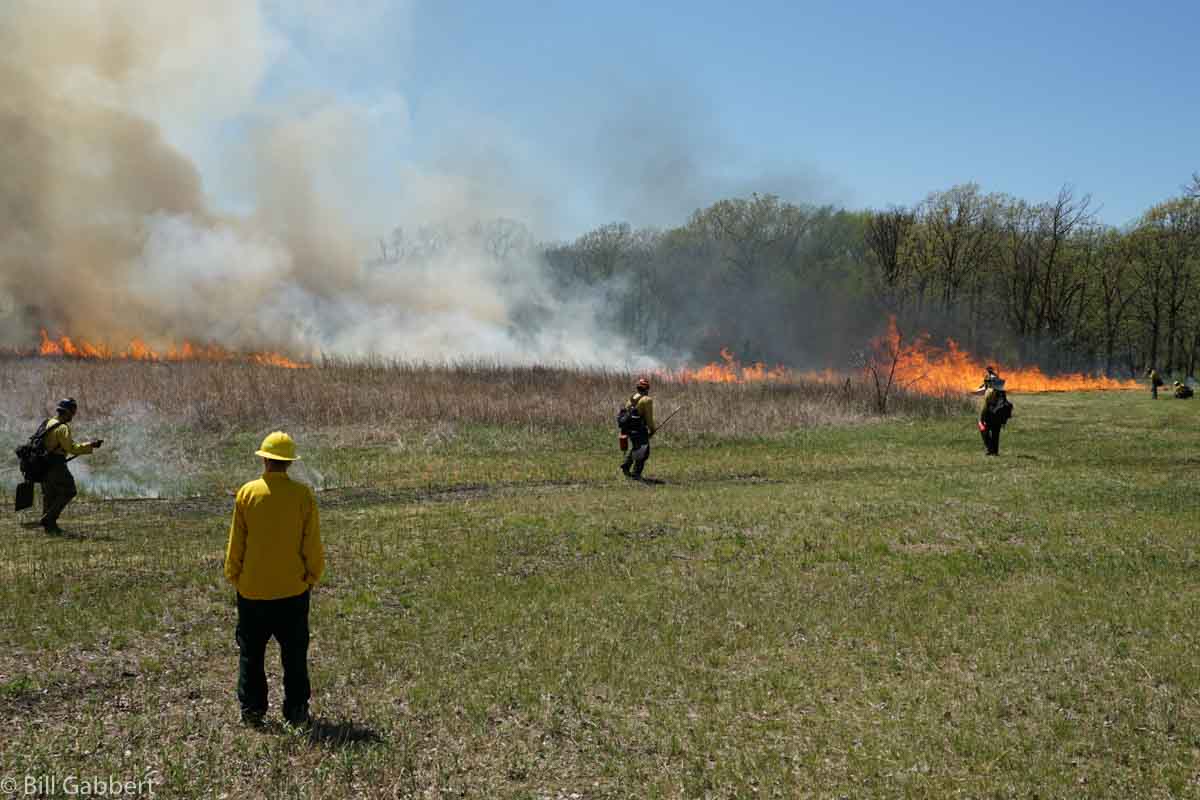


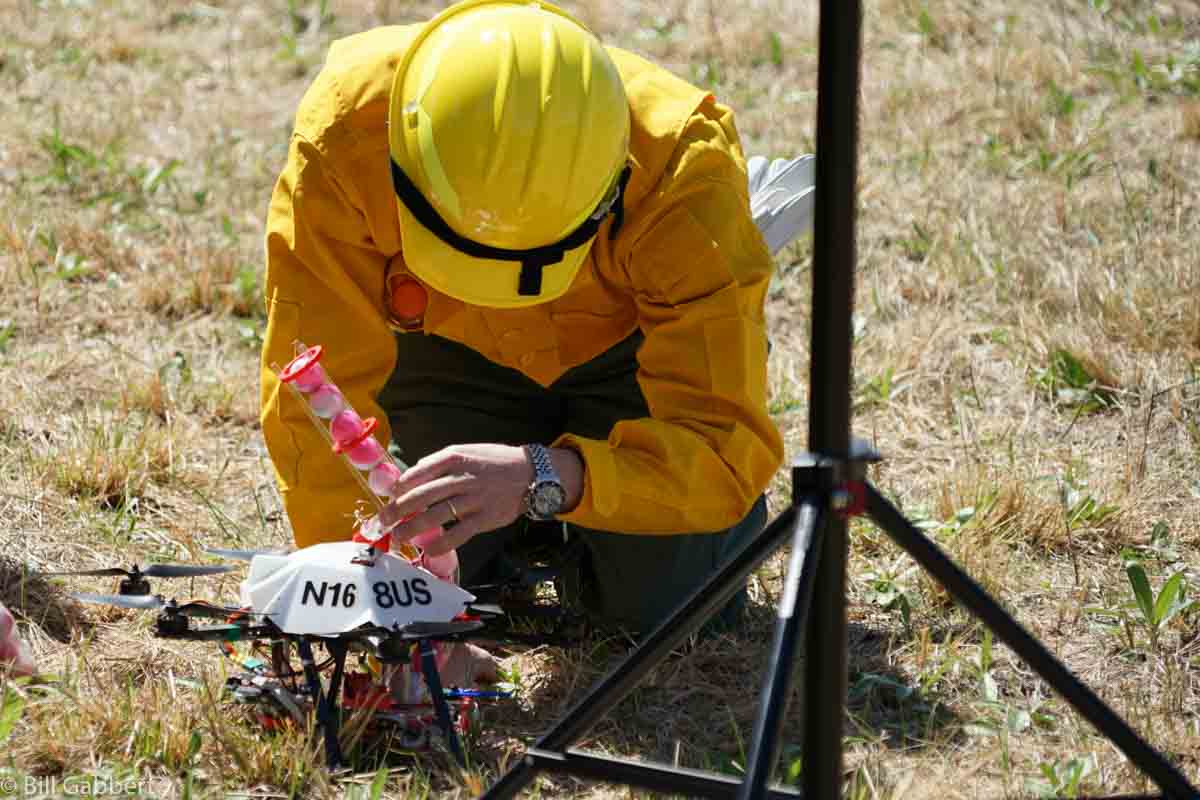
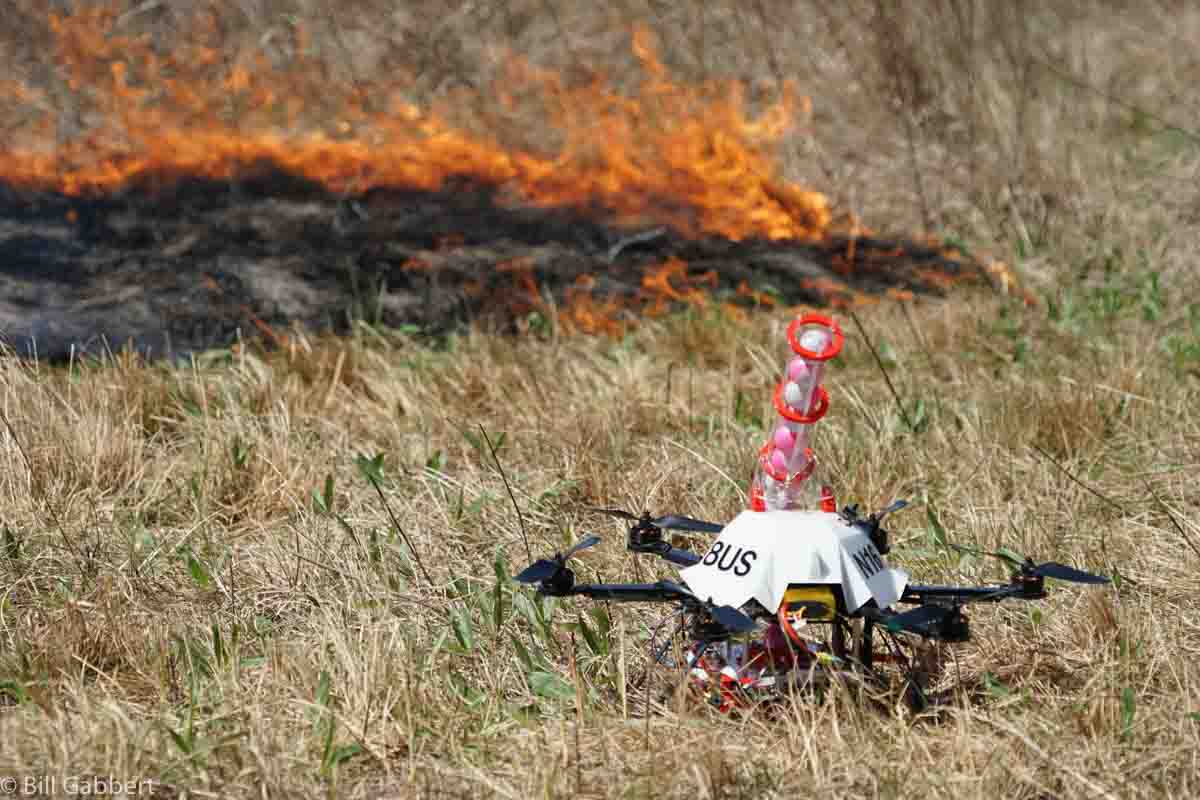
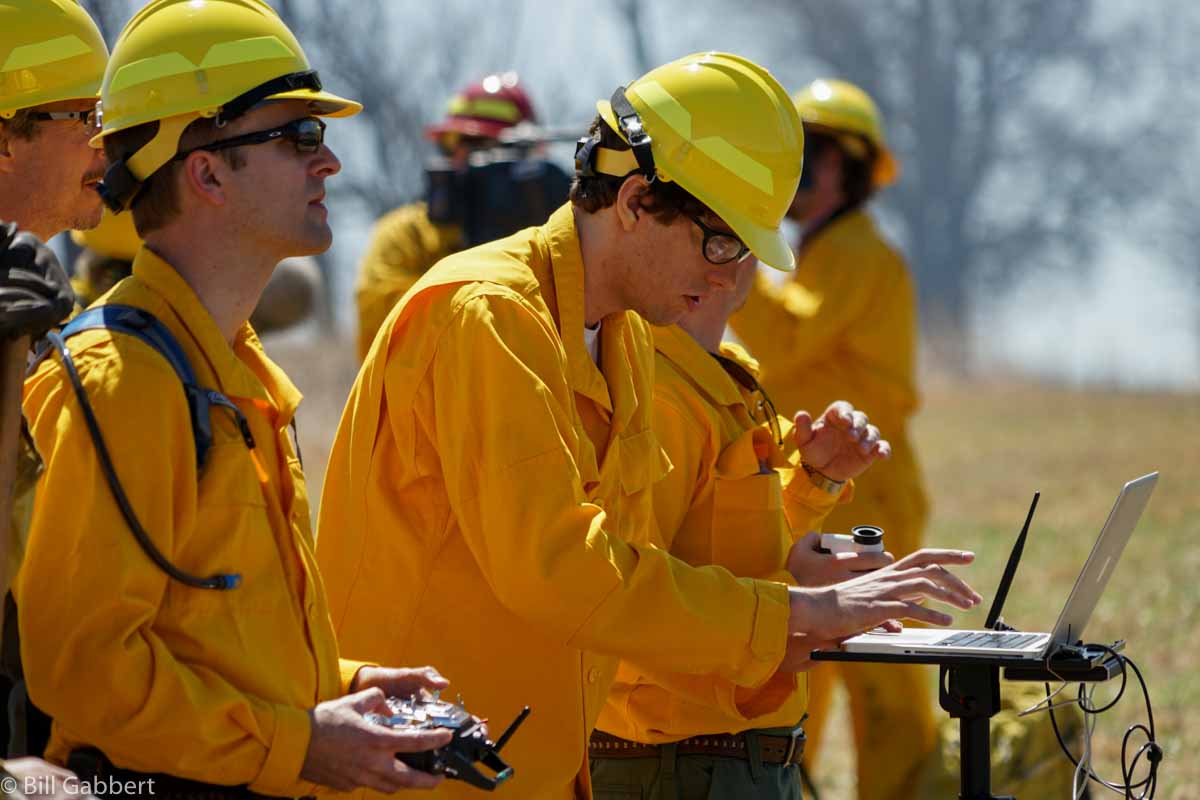


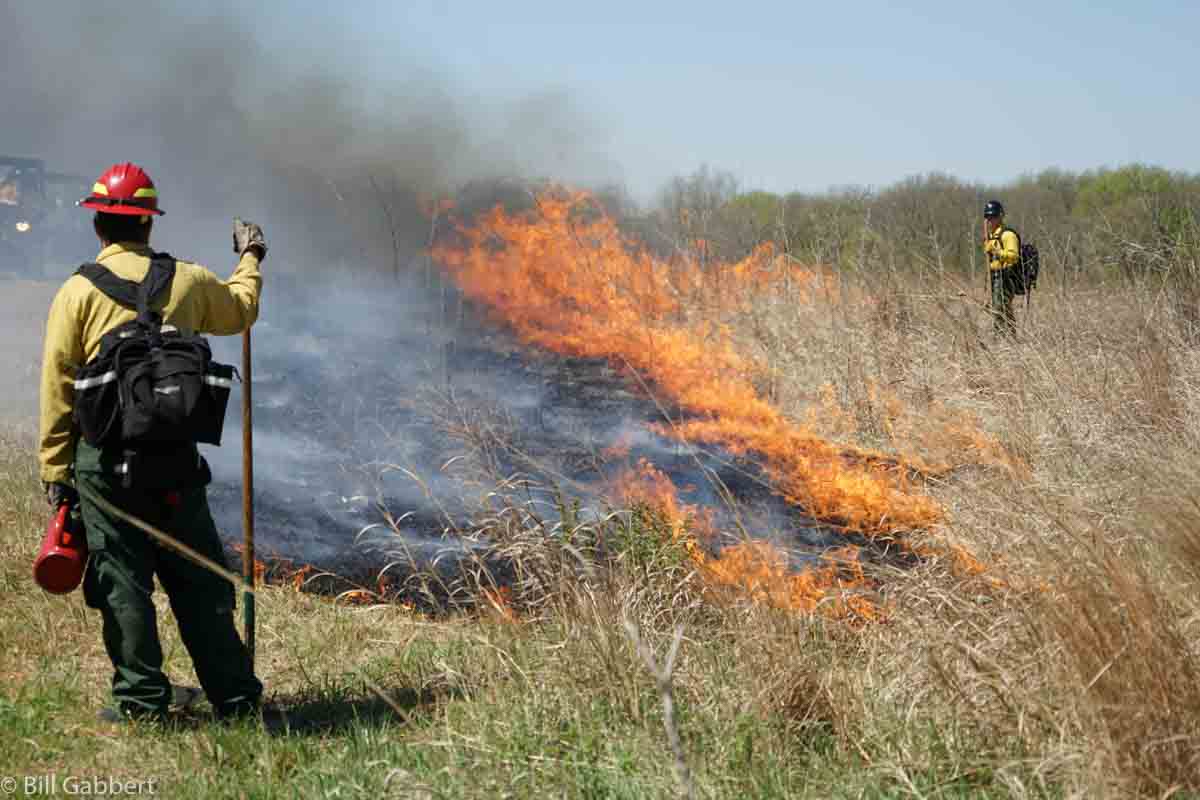
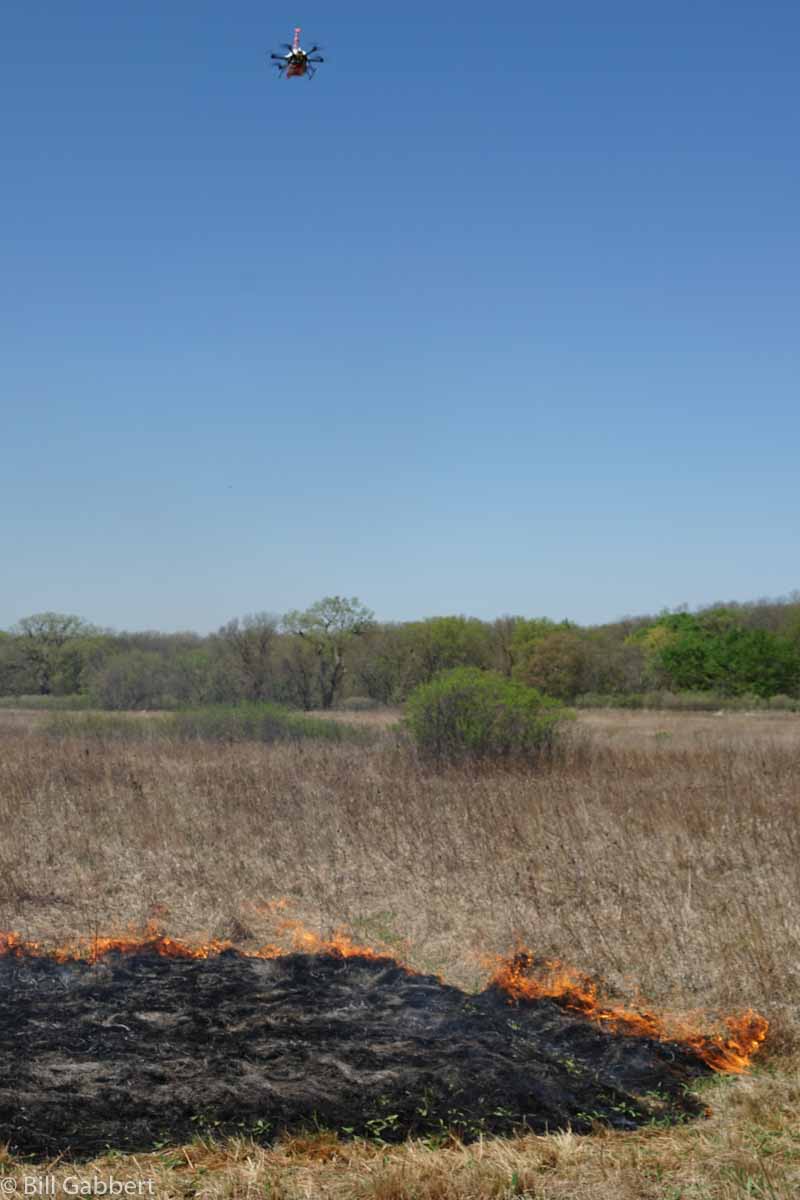
I’m with Eric. That was my first thought!!
Interesting use of new technology. Lets hope the idiots and terrorists do not use these UAVs as a new means to start arson fires!
Go ahead and delete the above post Bill. I initially wasn’t sure you were there.
The drone they used today appears to be much smaller than the drone in the previous article from a couple of weeks ago?
The larger UAS in the previous article was not the airframe that the NPS got approval to use. This smaller UAS was what was approved for the mission. The University of Nebraska Lincoln UAS group informed us that the smaller UAS is more reliable at successfully injecting the plastic spheres.
Are you in Nebraska Bill?